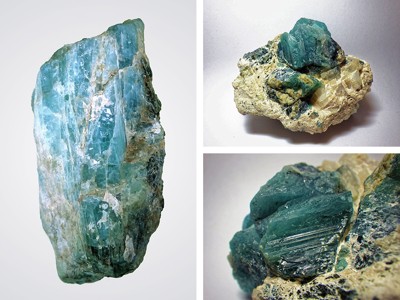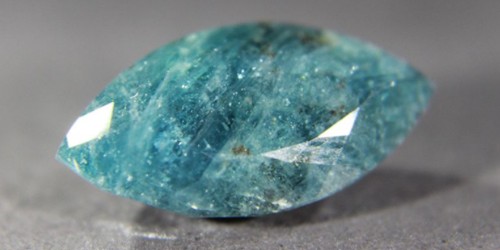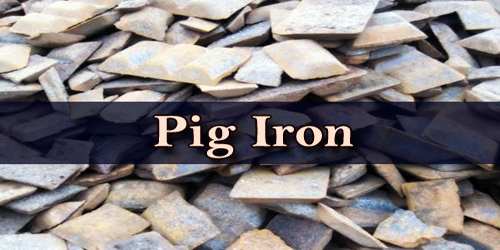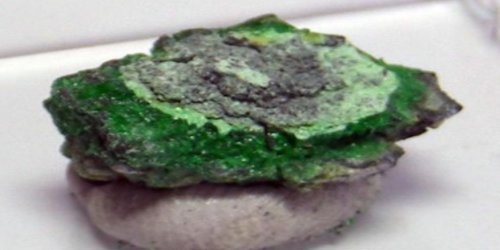Grandidierite is an extremely rare mineral and a gem that was first discovered in 1902 in southern Madagascar. General formula: (Mg, Fe2+)Al3(BO3)(SiO4)O2. It is an orthorhombic-dipyramidal bluish green mineral containing aluminum, boron, iron, magnesium, oxygen, and silicon. The mineral was named in honor of French explorer Alfred Grandidier (1836–1912) who studied the natural history of Madagascar.
Grandidierite forms characteristic translucent bluish green or greenish blue elongated crystals. It has strong pleochroism: dark blue-green, colorless and dark green.
General Information
- Category: Nesosilicate
- Formula: (Mg, Fe2+)Al3(BO3)(SiO4)O2
- Crystal system: Orthorhombic
- Crystal class: Dipyramidal (mmm)

Fig: Grandidierite
Properties
Grandidierite is typically bluish-green in color and derives its distinctive color from traces of iron. It has a hardness of 7 to 7.5 on the Mohs scale, similar to garnet; a density of 2.85 to 3.00, in the approximate range of tourmaline; and a refractive index of 1.590-1.623. It forms in the orthorhombic crystal system.
- Color: Bluish green
- Cleavage: Perfect
- Fracture: Brittle
- Mohs scale hardness: 7.5
- Luster: Vitreous, Pearly
- Streak: White
- Diaphaneity: Transparent, Translucent
- Density: 2.976
- Optical properties: Biaxial (-)
Occurrence: A rare accessory mineral in aluminous boron-rich rocks, thermally and high-grade regionally metamorphosed under low pressure; in pegmatites, aplites, gneisses; in xenoliths.
In addition to Madagascar, it has been reported from New Zealand, Norway, Suriname, Algeria, Italy, Malawi, India, the United States, Canada, Antarctica, the Czech Republic, and other localities. Yet gem-quality grandidierite is extremely rare.
Association: Quartz, potassic feldspar, plagioclase, biotite, garnet, \hypersthene,” spinel, corundum, sillimanite, andalusite, cordierite, tourmaline, kornerupine, sapphirine, serendibite, sinhalite.
Information Source:
















